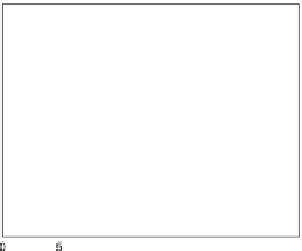Graphics Reference
In-Depth Information
Fig. 4.14
Typical behaviour of the PSF radius
σ
(
left
) and depth
z
(
right
) across an image se-
quence for an example feature
4.2.3.4 Estimation of the Useful Depth Range
At this point it is useful to examine which focal length and lens aperture are required
to obtain depth values of a given accuracy with the depth from defocus method.
Wöhler et al. (
2009
) assume that for a lens of focal length
f
1
, an object is well
focused at depth
z
0
, and a certain amount of defocus is observed at depth
hz
0
, where
the factor
h
is assumed to be close to 1 with
|
h
−
1
|
1. The depth offset
z
=
(h
−
1
)z
0
implies a circle of confusion of radius
c
1
with
1
f
−
1
1
.
1
2
κ
1
c
1
=
−
(4.18)
−
z
−
1
0
f
−
1
1
−
(hz
0
)
−
1
Now let the focal length be changed to
f
2
and the object depth be set to a larger
distance
kz
0
with
k>
1. The radius
c
2
of the corresponding circle of confusion is
readily obtained by
.
1
2
κ
1
1
c
2
=
(kz
0
)
−
1
−
(4.19)
f
−
1
2
f
−
1
2
(hkz
0
)
−
1
−
−
The f-stop number
κ
and the pixel size remain unchanged. Since the radius of the
circle of confusion is a monotonically increasing function of the PSF radius
σ
,we
assume that observing the same amount of defocus in both scenarios implies an
identical radius of the corresponding circle of confusion. With the abbreviations
1
1
K
=
−
f
−
1
1
z
−
1
0
f
−
1
1
−
−
(hz
0
)
−
1
−
h
−
1
kz
0
1
L
1
=
(4.20)
h
−
1
kz
0
+
1
L
2
=
1
hk
2
z
0
M
=
,












































































































































Search WWH ::

Custom Search